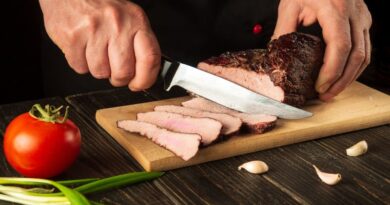Induction Cooking Health Hazards: It is critical to consider the main reasons why adopting an induction stove into your house should be addressed with care, as this technology is a source of high EMF toxicity by scientific investigation. Even the instructions for using an induction stove warn about standing too close!
Purchasing a kitchen stove is a specialized purchase that most individuals only make a few times in their lives. It is now fashionable to replace electric cooktops with induction stoves, which have become more popular. Is this a sensible investment on your part? Look at what we’ve got here…
How Does Induction Cooking Work?
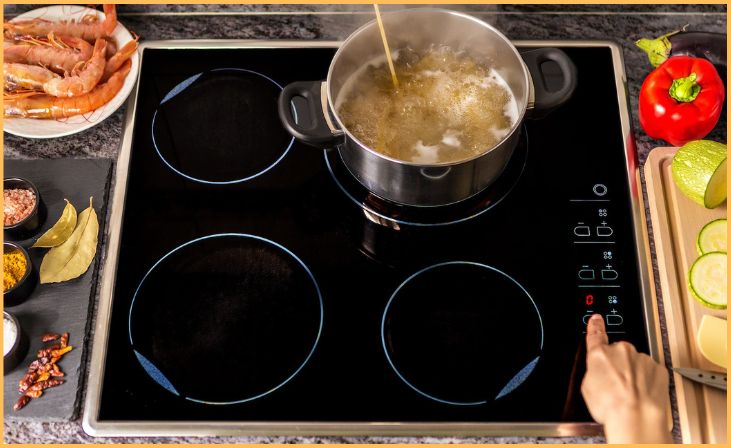
Instead of using heat from a flame or an electrical heating element to heat a cooking vessel, induction cooking uses electrical induction to heat a cooking vessel instead. To function properly, the cooking pot must be constructed of or include a ferromagnetic metal, such as cast iron or stainless steel. Because the heat is generated on the inner side of the pan, cooking is far more efficient.
As a result, you must be sure that the pans you use are acceptable for use on an induction cooktop. For example, copper or aluminum pans would not function unless magnetic layers were added to the bottom, which is challenging to do. Therefore, one of the most effective ways to determine whether your pans are still functional is to test them with a magnet.
An induction hob has a coil of copper wire under the ceramic plate, and when a cooking pot is put on top of it, an alternating electric current is transmitted via the coil of copper wire. Consequently, the fluctuating magnetic field produces a magnetic flux that causes an eddy current to be generated in the ferrous pot, which functions as the secondary winding of a transformer.
The pot is heated by the eddy current that flows through the pot’s resistance. See the section below for further information about eddy currents. It is estimated that induction hobs transmit around 84% of the energy compared to approximately 74% for gas or ceramic electric hobs, resulting in significant energy savings. Another essential consideration is safety; since there is no exposed flame, the possibility of a fire is exceedingly remote.
A pan of water will come to a boil in less than half the time it would take on a standard gas stove. Because they have greater touch with the heat underneath and the current is going all the way through the pan, an induction cooktop will also increase the life of your pans. This will prevent your pan from generating hot spots, which will, in turn, prevent food from being burned or scorched.
Quick Link: How Long To Boil Sausage To Make Them Perfect!
Are Induction Cooktops Safe?
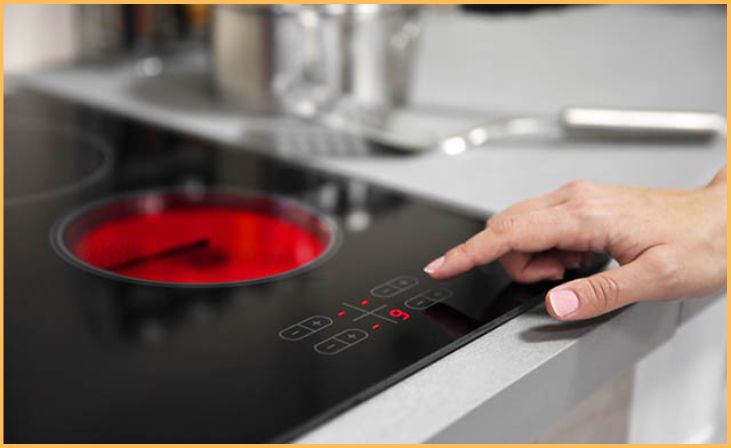
As a starting point, induction cooktops release detectable electromagnetic field radiation (EMF) quantities. Radiation would not have been present in your area if the induction stove had not been installed.
Each extra kilowatt-hour of electromagnetic field exposure raises your chance for a wide range of harmful health impacts. Furthermore, we urge you to reduce the quantity of EMF radiation you are exposed to. As a result, we do not encourage induction stoves as a general rule.
However, this is just a general guideline. What do you think of induction stoves in particular? Are they safe to use? Who or what is the source of the danger and risk?
When it comes to the EMF hazards associated with induction cooking surfaces, there are two things to keep in mind:
The quantity of electromagnetic field (EMF) in your local surroundings
The amount of electromagnetic field (EMF) being carried directly into your body.
Because induction cooking surfaces create electromagnetic fields (EMF), they are pushing this radiation into your kitchen. Any electrical heater generates a significant amount of EMF radiation as part of its operation. Cooktops with induction technology are no exception.
According to one article from Healthy Home Economists, tests have found that most induction rings surpass the 1998 maximum exposure limits established by the International Commission on Nuclear Radiation Protection and Research.
Furthermore, the closer you are to the cooking surface, the greater the amount of EMF you will be exposed to. (And, conversely, the greater the distance between you and the induction stove, the less EMF exposure you will have.)
However, this is just a portion of the possible exposure when it comes to induction stoves.
The other component is derived from the way induction stoves operate. Remember that induction stoves heat pans by including the pan as an electrical circuit component. The pan is employed as a conductor of electromagnetic field (EMF), which causes the pan to heat up.
The human body also acts as a conductor of electromagnetic field radiation.
As a result, whenever you contact the pan, you become a part of the circuit. And the same electromagnetic field (EMF) that warms the pan begins to circulate through your body.
The most effective strategy to protect oneself from EMF radiation emitted by an induction stove and the health risks linked with it is to stop using an induction stove completely. Gas and propane stoves do not create electromagnetic fields (EMFs) and are thus far safer to operate due to the health hazards associated with radiation exposure.
What are the Disadvantages of Induction Cooking?
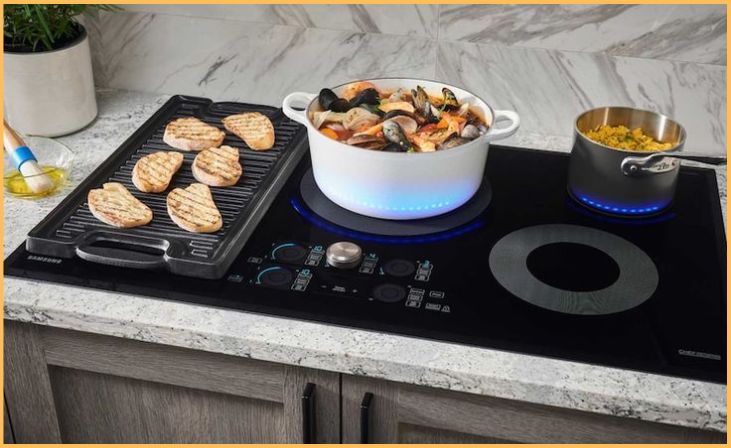
- Because induction technology is still in its early stages, induction stoves are often more costly than electric and gas equivalents. However, if you’re in the market for a new collection, this is an investment that will pay you in the long run: An induction range consumes 10% less energy than a smooth-top electric range of the same size. In addition, as induction becomes more widely used, the cost of installation is beginning to decline.
- Cookware designed for use with induction stoves and cooktops is required. Most cookware, mainly stainless steel, is compatible with induction; nevertheless, if you’re switching to induction, your older cookware may need to be replaced. This is because iron particles are present in induction-safe cookware, and when they come into contact with induction heaters, they become active and generate heat. As a precaution, be sure that any new pots and pans are labeled “induction safe.” If you’re unsure about earlier models, do the magnet test: if a magnet attaches to the bottom of the device, it can be used with an induction motor.
- There is a learning curve with induction stoves and cooktops. For the heating element to be effectively activated, the appropriate-sized cookware must be put in the middle of the heating element. Flat-bottomed pots and pans are ideal because the pot cannot be too tiny, too off-center, or too unstable. However, we discovered that, even though most induction cooktops have a lockset that allows you to shake your pan around while cooking freely, the learning curve is a little frustrating: the heating element occasionally cuts off prematurely or shuts down without warning.
- Because they heat food more quickly than conventional cooking techniques, induction stoves and cooktops have the potential to overcook meals at first. However, it’s important to remember that cookware doesn’t need to be preheated for as long when cooking with induction, and a lower heat setting is required to keep food at the proper temperature. The benefit of this trade-off is a shorter cooking time.
- Induction stoves and cooktops may sometimes produce a rattling sound caused by a large amount of energy transferred from the coil to the pan during the cooking process. Even while this whirring sound usually goes away when the heat is turned down or when you add food to the pot or pan, some people find it to be bothersome.
- Induction cooktops are prone to scratching. This is because the grate or heat element on electric and gas ranges is designed to handle more significant wear and tear, while induction ranges are composed of smooth glass, making them more prone to scratching. Therefore, induction cooktop makers recommend using cookware with clean, smooth bottoms and preventing moving your pots and pans around on the stove’s surface when cooking. It is also recommended that you avoid using sharp instruments or abrasive cleaning products on your stove.
Quick Link: 10 Must-Try 100-Calorie Protein Snack Ideas: Nourish and Energize
How Long Do Induction Cooktops Last?
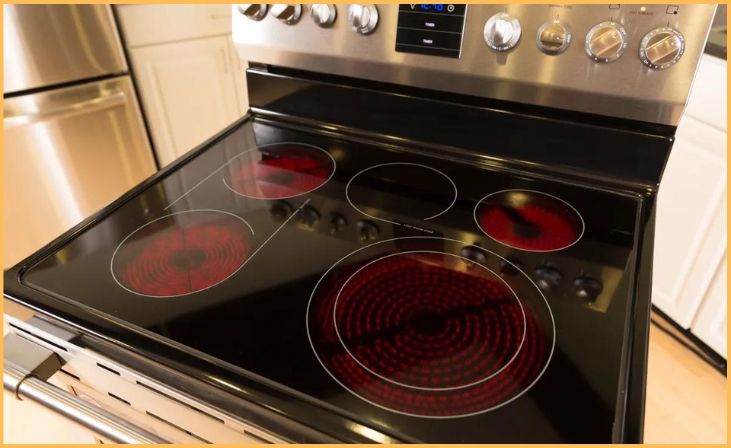
The lifespan of an induction cooktop is often measured in operational hours rather than traditional years, a characteristic attributed to the nature of its technology. Consumer-grade induction cooktops are generally designed to function reliably for approximately 10,000 operational hours. In contrast, commercial-grade counterparts are engineered for significantly longer durability, boasting a lifespan of around 30,000 hours of continuous operation.
This unique approach to assessing longevity acknowledges the continuous and consistent use induction cooktops undergo. Rather than traditional calendar-based estimations, operational hours provide a more accurate representation of the wear and tear these appliances endure over time.
Conclusion
Induction cooking, with its array of advantages, necessitates a grasp of its safety implications. Despite occasional concerns, the potential health hazards associated with induction cooking remain largely negligible. By adhering to safety protocols and employing suitable cookware, individuals can enjoy the benefits of induction cooking while ensuring a safe and effective culinary experience.
Amidst the allure of induction’s rapid and precise heating, the discourse often circles back to safety. However, it’s crucial to note that extensive studies affirm the minimal health risks posed by the electromagnetic fields (EMFs) emitted by induction cooktops. These fields are generally considered safe, with exposure levels significantly lower than those emitted by many everyday electronic devices.
FAQs
Induction cooktops emit electromagnetic fields (EMFs) that are generally considered safe. The EMF exposure levels are significantly lower than those of many everyday electronic devices and pose minimal health risks.
Induction cooktops should not interfere with pacemakers or most medical implants. However, individuals with specific concerns should consult their healthcare provider for personalized advice.
Induction cooktops heat cookware directly, reducing the risk of burns compared to traditional gas or electric stoves. However, the cookware and the cooktop itself may remain hot after cooking, necessitating caution.
Induction cooktops require ferrous (magnetic) cookware to generate heat. Cookware made of materials like cast iron, stainless steel, or magnetic-grade stainless steel is suitable for induction cooking.
Induction cooking doesn’t produce harmful substances like gas emissions from traditional stoves. However, as with any cooking method, proper ventilation is recommended to minimize indoor air pollutants.


